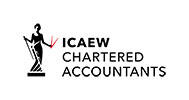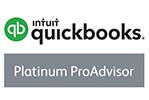Scottish Budget approved - after furore!
The Scottish Budget for 2023/24 went ahead on 15 December but only after a furore in the Scottish Parliament about leaked documents relating to the proposed tax and other announcements. But were these good or bad news if you’re a Scottish taxpayer?

Scotland determines its income tax rates for earned income (but not investment income) separately from the rest of the UK. The latest Budget announcements signalled an increase in the existing differential in rates by adding an extra percentage point to the income tax rate for many taxpayers. In addition, the earnings band at which the top rate of tax applies was reduced to mirror the change in the rest of the UK. The table below shows the current year’s income tax rates and those proposed for 2023/24.
|
|
2022/23 |
2023/24 |
||
|
Rates |
Earnings |
Tax rate |
Earnings |
Tax rate |
|
Tax -free allowance |
£12,570 |
- |
£12,570 |
- |
|
Starter |
£12,571 - £14,732 |
19% |
£12,571- £14,732 |
19% |
|
Basic |
£14,733 - £25,688 |
20% |
£14,733 - £25,688 |
20% |
|
Intermediate |
£25,689 - £43,662 |
21% |
£25,689 - £43,662 |
21% |
|
Higher |
£43,663 - £150,000 |
41% |
£43,663 - £125,140 |
42% |
|
Top |
Above £150,000 |
46% |
Above £125,140 |
47% |
Higher income tax rates weren’t the only bad news. Anyone buying a second or subsequent dwelling will have to pay more land and buildings transaction tax (LBTT). The additional rate, i.e. that paid on top of standard LBTT was hiked from 4% to 6% with effect for purchases completed after 15 December 2022.
The Scottish government’s summary of tax and other changes is available here.
Related Topics
-
CT61
-
Employee home-to-work travel costs during rail strike
To keep the impact of the recent London Underground strikes on your business to a minimum it offered to reimburse employees for the costs of travelling to work via other means. Does this create a taxable benefit in kind?
-
Electronic VAT return and payment due



 This website uses both its own and third-party cookies to analyze our services and navigation on our website in order to improve its contents (analytical purposes: measure visits and sources of web traffic). The legal basis is the consent of the user, except in the case of basic cookies, which are essential to navigate this website.
This website uses both its own and third-party cookies to analyze our services and navigation on our website in order to improve its contents (analytical purposes: measure visits and sources of web traffic). The legal basis is the consent of the user, except in the case of basic cookies, which are essential to navigate this website.